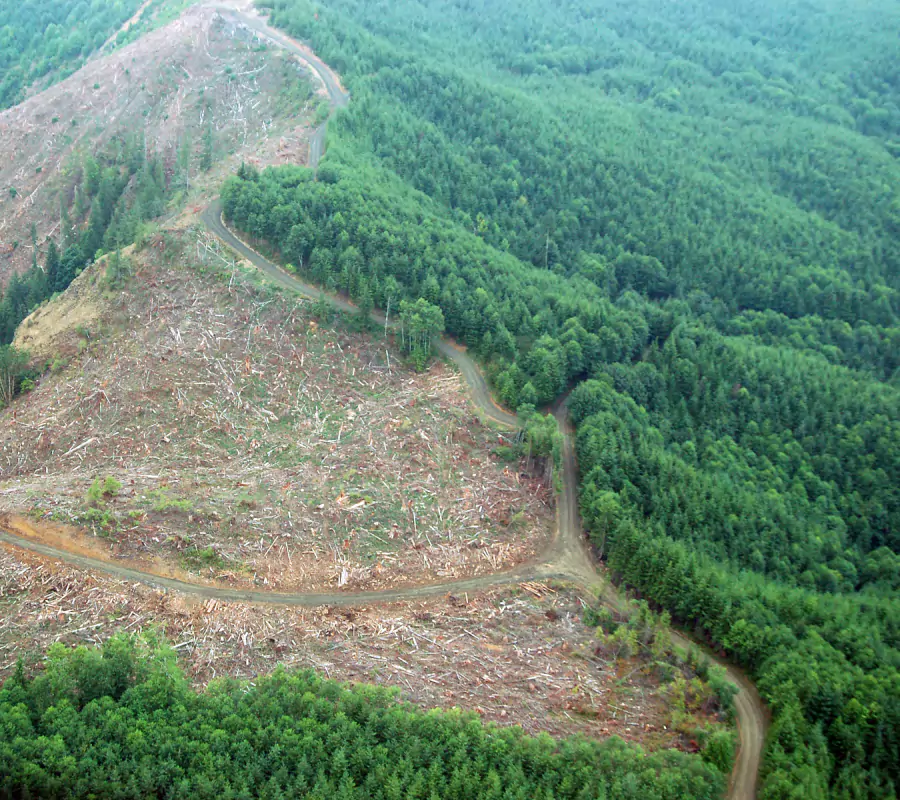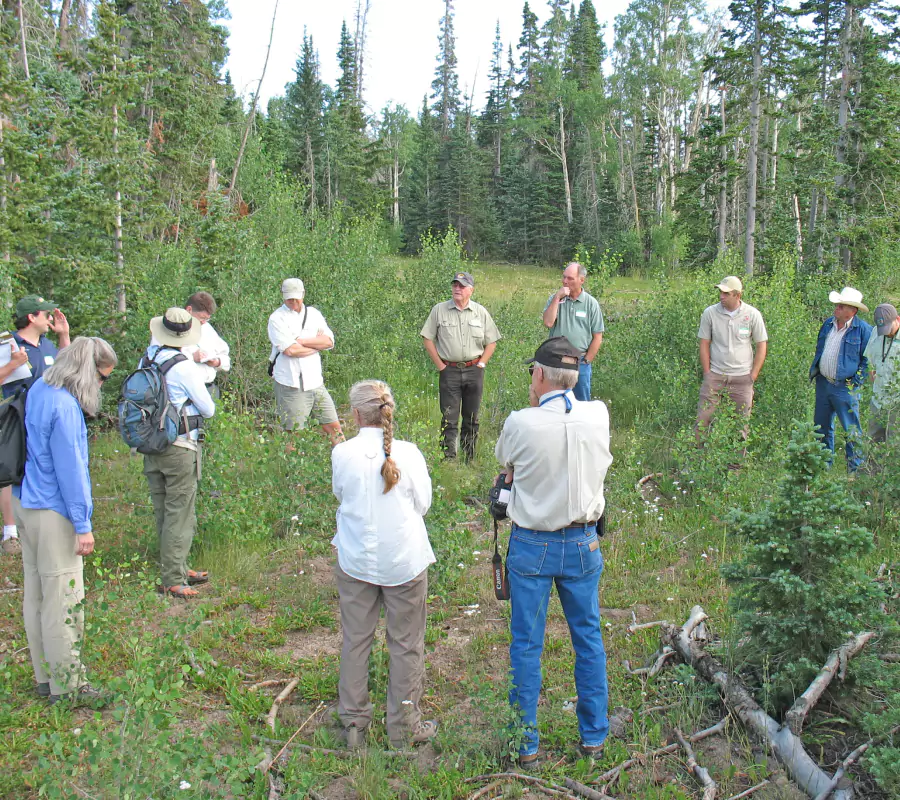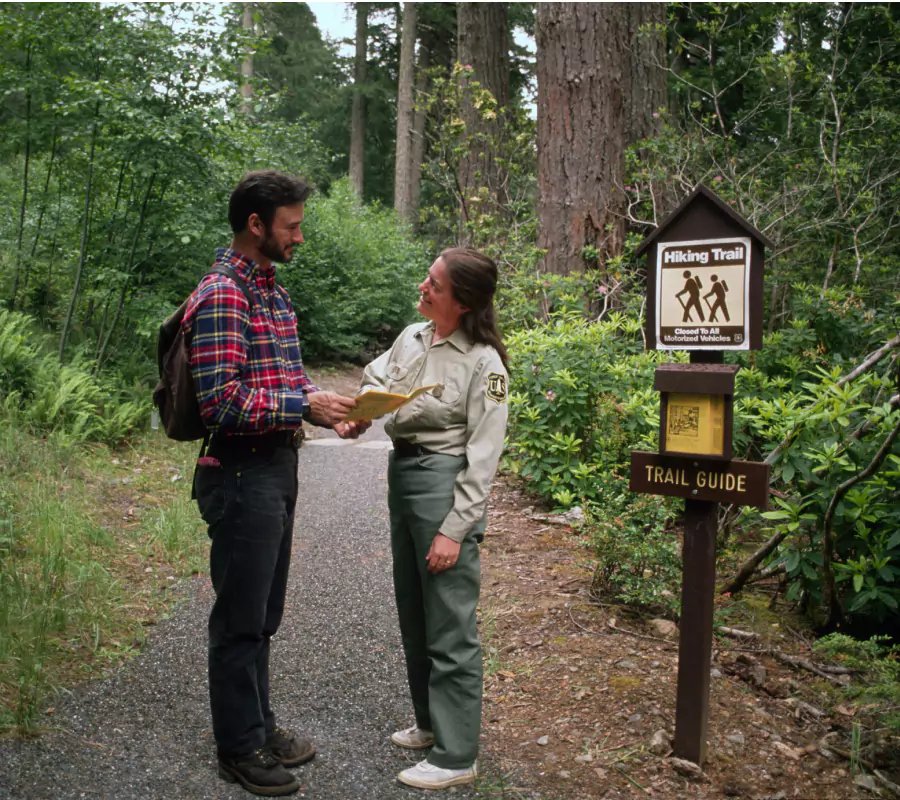Updates to the plan are underway. Explore this page to learn more about what that means and why it matters!

Why is the NWFP plan important?
The Northwest Forest Plan should play a critical role in protecting communities from wildfire, respecting Indigenous practices, spurring economic prosperity, and protecting endangered wildlife. In addition, the Northwest Forest Plan must ensure that our forests continue to provide recreation, leisure, and beauty for generations to come.

The History
When it was developed in 1994, the Northwest Forest Plan was the first ecosystem management plan in the nation and perhaps in the world. The Plan took a holistic approach to forest management and was scientifically sound, ecologically credible, and legally responsible; this compromise was intended to conserve endangered species, restore water quality, protect rare habitats, and produce a predictable supply of timber to support the socioeconomic needs of nearby communities.
While the Plan was extremely innovative at the time, it did not sufficiently consider a number of important issues we now face, including the effects of global climate change, the role of Tribes and Indigenous knowledge in land management, and the need to protect communities from uncharacteristic wildfires.

What is happening now?
To address these changing conditions, the Forest Service began the amendment process for the Northwest Forest Plan in 2023. The need to change the Plan was informed by a series of public roundtable discussions in 2017, a Science Synthesis in 2018, and a Bioregional Assessment in 2020. The Forest Service has also appointed a 22-member Federal Advisory Committee to provide the agency with consensus advice on three key topics central to the proposed amendment: wildfire resilience, mature and old growth forest conservation, and centering Indigenous priorities in land management.
In July 2024, the Federal Advisory Committee delivered its first round of consensus recommendations to the Secretary of Agriculture and Chief of the Forest Service. The recommendations include more than 100 provisions that elevate Tribal co-stewardship of national forestlands and dozens that seek to conserve the remaining old growth forests in the region while also providing for the recruitment over time of these priceless ecological gems. Steps to address climate change and wildfire risk are woven throughout the recommendations, as is the need to build a local restoration workforce to steward these forests for present and future generations.
The Forest Service is engaging in government-to-government consultation with Tribes, as well as consultation with the National Marine Fisheries Service and United States Fish and Wildlife Service on the amendment. Currently, the public is invited to comment on the draft environmental impact statement and, later, file administrative objections to the proposed amendment.

What is changing?
While the amendment focuses on those key issues, it will not change aspects of the Plan that monitoring has revealed are working, such as the Aquatic Conservation Strategy. The Forest Service will also retain the “Survey and Manage” program; the existing land-use allocation boundaries for Late-Successional Reserves, Adaptive Management Areas, Riparian Reserves, and Matrix (in addition to congressionally designated areas such as Wilderness Areas); existing protections for northern spotted owls and marbled murrelets; and other key aspects of the Plan.

When is this happening?
Now! The Forest Service released a draft environmental impact statement analyzing the environmental consequences of the amendment in November 2024 and plans to release a final environmental impact statement and draft Record of Decision in 2025. The decision to amend the Plan will be subject to administrative review prior to implementation. The public is currently invited to comment on the draft environmental impact statement until March 17, 2025 and will later be able to file administrative objections to the proposed amendment. and will later be able to file administrative objections to the proposed amendment.
More information on the amendment process, as well as links to background documents and how the public can engage, are available here.
